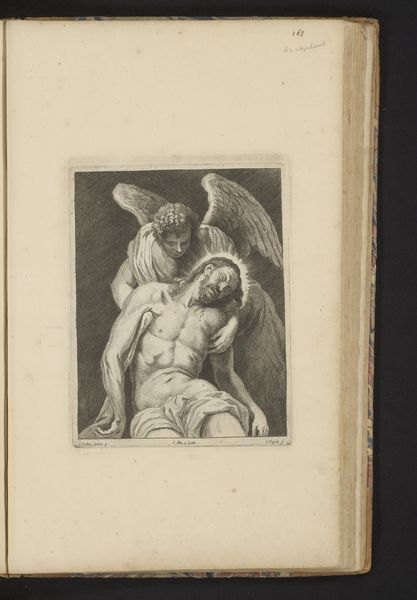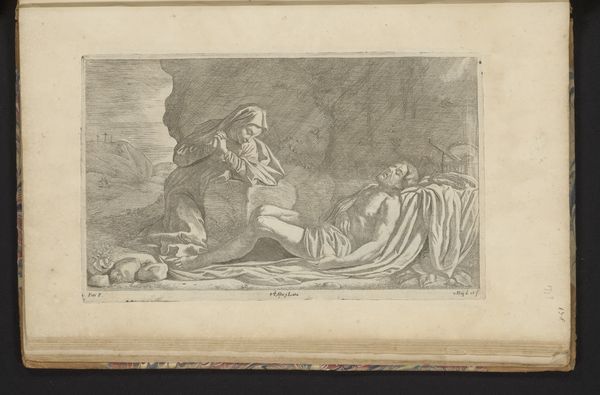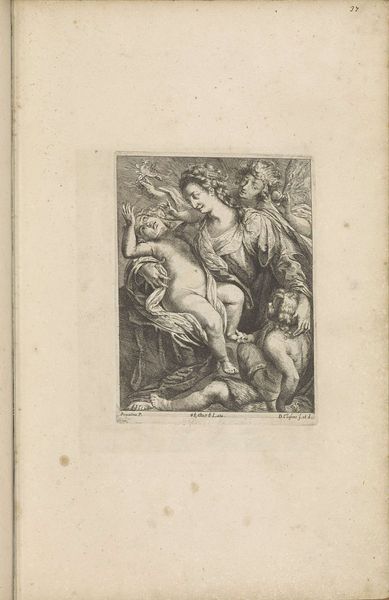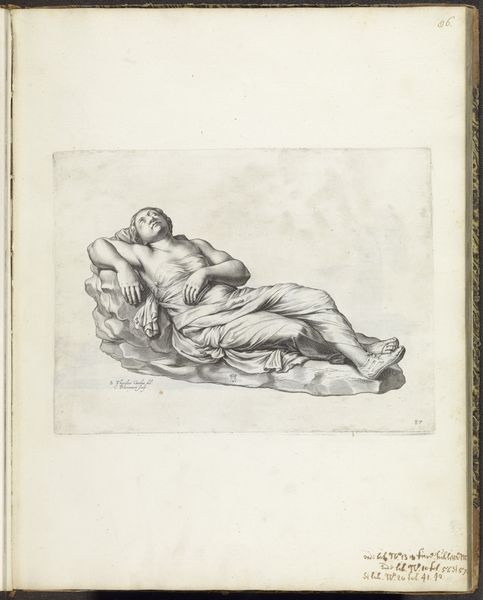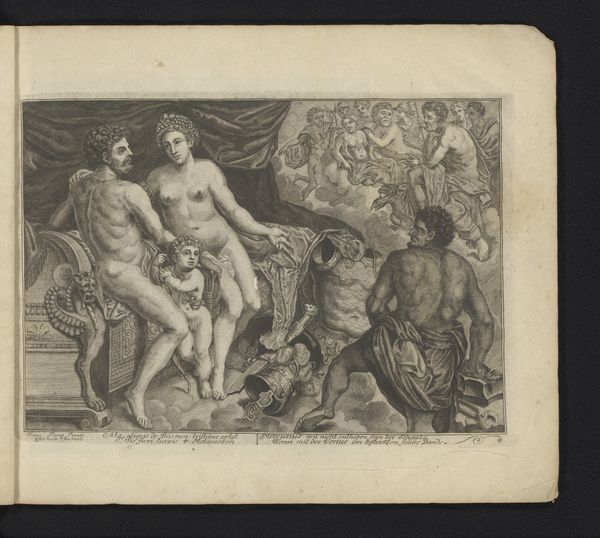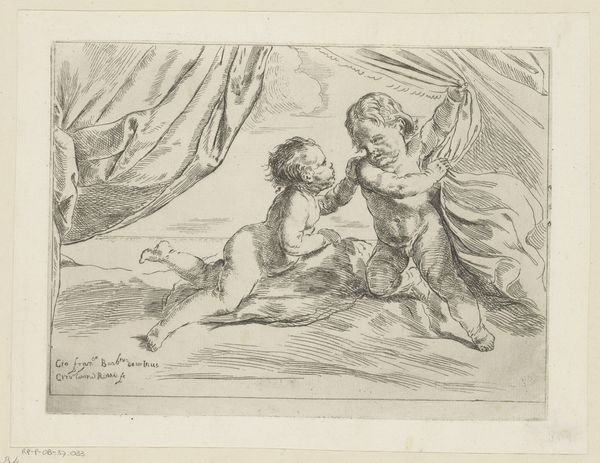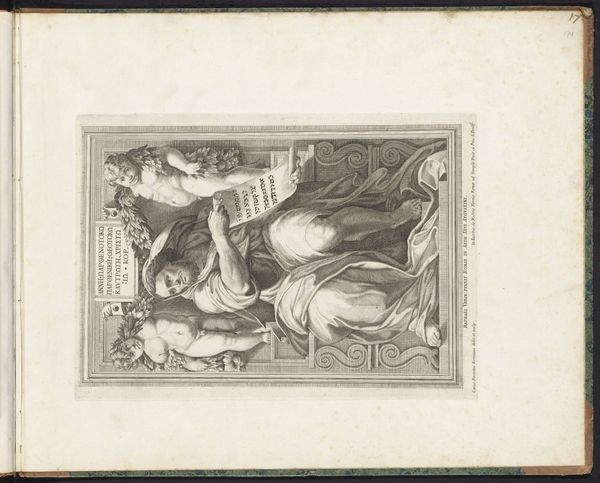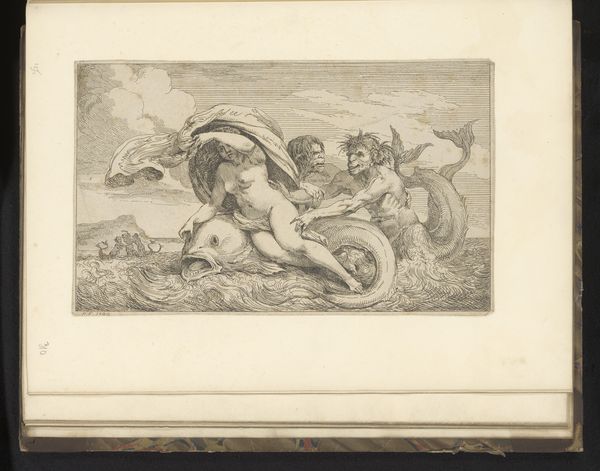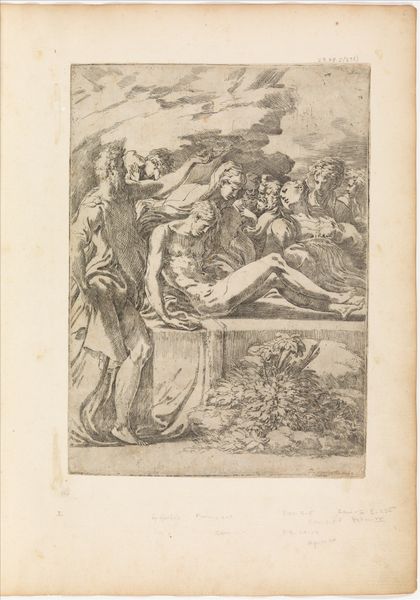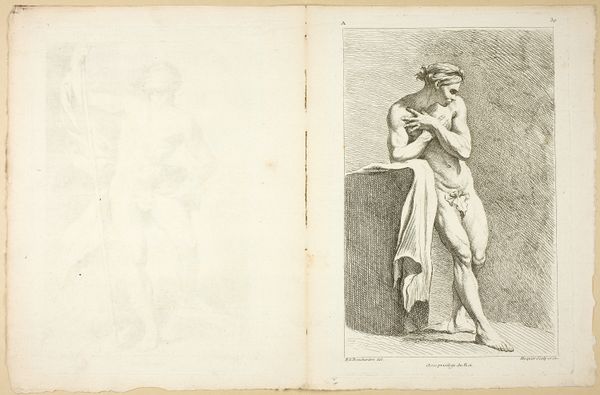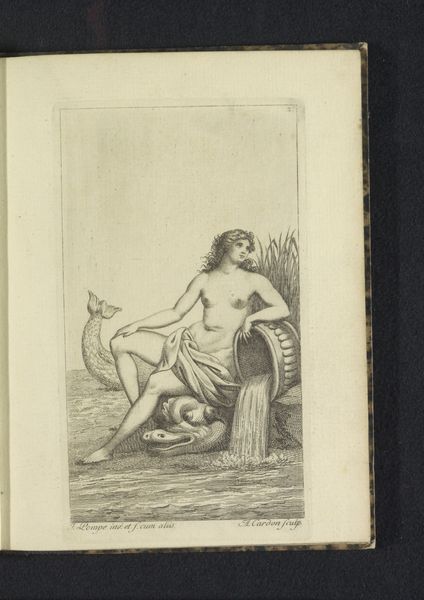
drawing, print, etching, intaglio, paper, engraving
#
portrait
#
drawing
#
narrative-art
#
baroque
# print
#
etching
#
intaglio
#
classical-realism
#
figuration
#
paper
#
history-painting
#
academic-art
#
engraving
Dimensions: height 225 mm, width 172 mm
Copyright: Rijks Museum: Open Domain
Editor: So, this is "Bewening van Christus," or "Lamentation of Christ," a 1660 etching and engraving on paper by Johannes Popels. It depicts the dead Christ surrounded by mourners. I am struck by the contrast between the smooth, almost idealized rendering of Christ’s body, and the rougher lines used to depict the other figures. How do you read this piece? Curator: The labor invested in this print is evident; it speaks volumes about the printmaking process itself. The artist isn't just representing a scene, he's actively involved in a chain of production and distribution. Notice how the use of engraving allows for precise lines and details, which were reproducible and available to a broader audience. Who was consuming these images and what purpose did it serve? Editor: That’s fascinating. It makes me consider who was commissioning and buying prints like this at the time. Was it mainly religious institutions, or were individual collectors also involved? Curator: Both, I think. Look at the scale and materials. This is easily reproducible artwork, meant for consumption and dispersal. Were these mass-produced and circulated in specific social groups, informing or even constructing shared values and beliefs related to faith and mortality? Consider too, the raw materials involved—paper, ink, the metal plate itself—and the socio-economic structures that facilitated their availability. Editor: So it’s less about the individual genius of Popels and more about the collaborative process of creating and distributing this imagery within a particular society. Curator: Precisely! It's about how devotional imagery like this, rendered through the skilled labor of an artisan and mediated by market forces, contributed to the collective imagination of the 17th century. Did it serve to promote established religious doctrines or perhaps offer solace in the face of disease or upheaval? What do you think? Editor: It gives me a much broader perspective on the printmaking, beyond just its artistic value. Thanks! Curator: My pleasure. It’s important to think about the many lives this object lived and how each step of its journey reveals something about the world it inhabited.
Comments
No comments
Be the first to comment and join the conversation on the ultimate creative platform.
